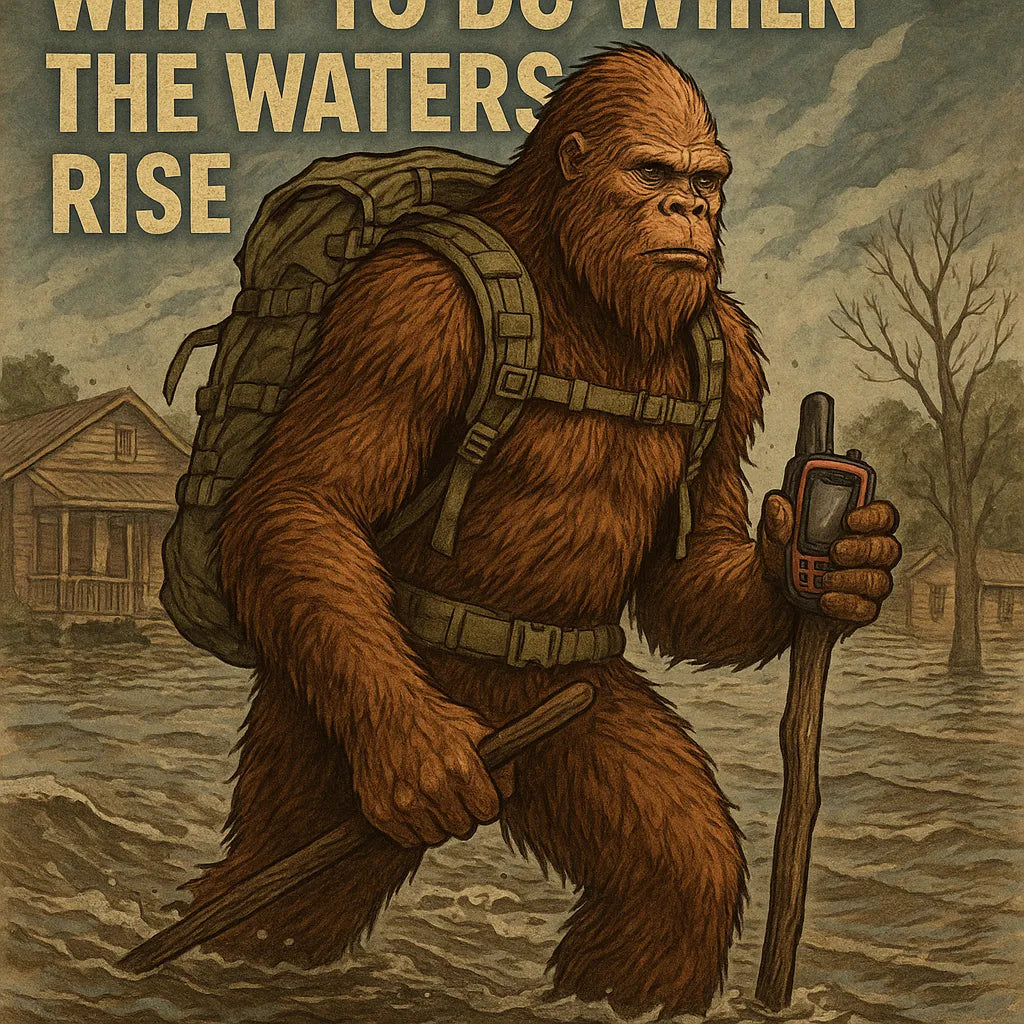When the Water Comes for You: Flood Survival Tips from the Field
Floods don’t care about your schedule. They’re fast, unforgiving, and often lethal if you’re not prepared.
At Squatch Survival Gear, we build gear that keeps you alive when conditions go sideways. And that includes when the rivers swell, the levees break, or the rain just won’t stop.
Here’s what to do when the floodwaters rise—and how to walk out the other side.
1. Don’t Wait for the Wake-Up Call
Floods are one of the most common natural disasters in the U.S. If you’re near rivers, in coastal zones, or anywhere with poor drainage, you’re at risk. Period.
Before disaster strikes:
-
Know your elevation and local flood zones.
-
Plan your bug-out route and have a backup.
-
Pack a go-bag ahead of time. Your life may depend on how fast you can move.
-
Have backup comms. A Garmin inReach or similar GPS satellite device is a game-changer when the grid goes down.
2. When the Water’s Rising, Go Vertical or Go Now
If you're caught at home:
-
Head to higher ground. Do not wait for rescue.
-
Avoid basements and low floors. They trap water—and people.
-
Shut off utilities if you have time, especially gas and power.
If you get the order to evacuate, do it. Don’t argue with the water.
3. What to Pack for Flood Evacuation
You're not taking everything—just what matters.
✅ Rugged backpack with internal dry bags – We recommend a large-volume pack like the Sasquatch Ruck Sack or Kakamora 3-Day Pack. Add a small dry bag for documents/electronics and a larger one for clothes and gear you need to stay dry.
✅ Critical documents – ID, insurance, meds—sealed in your small dry bag
✅ EDC essentials – Flashlight, multitool, fixed blade, power bank
✅ Water & filtration – Floodwater = chemical soup
✅ Food – MREs, XMREs, high-calorie rations
✅ Cash – Assume cards won’t work
✅ First aid kit – We suggest our Advanced IFAK
✅ Dry clothes & rain gear – Hypothermia doesn’t care that it’s “just water”
4. What NOT to Do in a Flood
❌ Don’t walk or drive through floodwaters
Just six inches can knock you over. Two feet can carry your car away.
❌ Don’t rely on cheap gear
That imported daypack isn’t going to cut it when submerged.
❌ Don’t rush back
Stay out of flooded areas until authorities give the all-clear. Downed power lines and contamination are still active threats.
5. After the Flood: Regroup and Rebuild
Made it out? Good. Now be smart.
-
Disinfect everything—floodwater carries sewage, chemicals, and disease.
-
Document all damage with photos for insurance.
-
Repack your gear. What worked? What failed? Upgrade now—not when the next flood’s at your door.
Prepare Like It’s Coming—Because One Day, It Is
When the rain starts falling, it’s already too late to prep. That’s why we build our gear for real-world emergencies, not Instagram aesthetics.
📦 Explore flood-ready packs and gear
📋 Download our Bug-Out Bag Checklist
📲 Follow us for tips, drops & survival training
Final Thought:
When the water rises, you don’t want to be wishing you had prepped. You want to be moving—fast, dry, and ready.
Stay dry. Stay dangerous. Stay Squatch.

